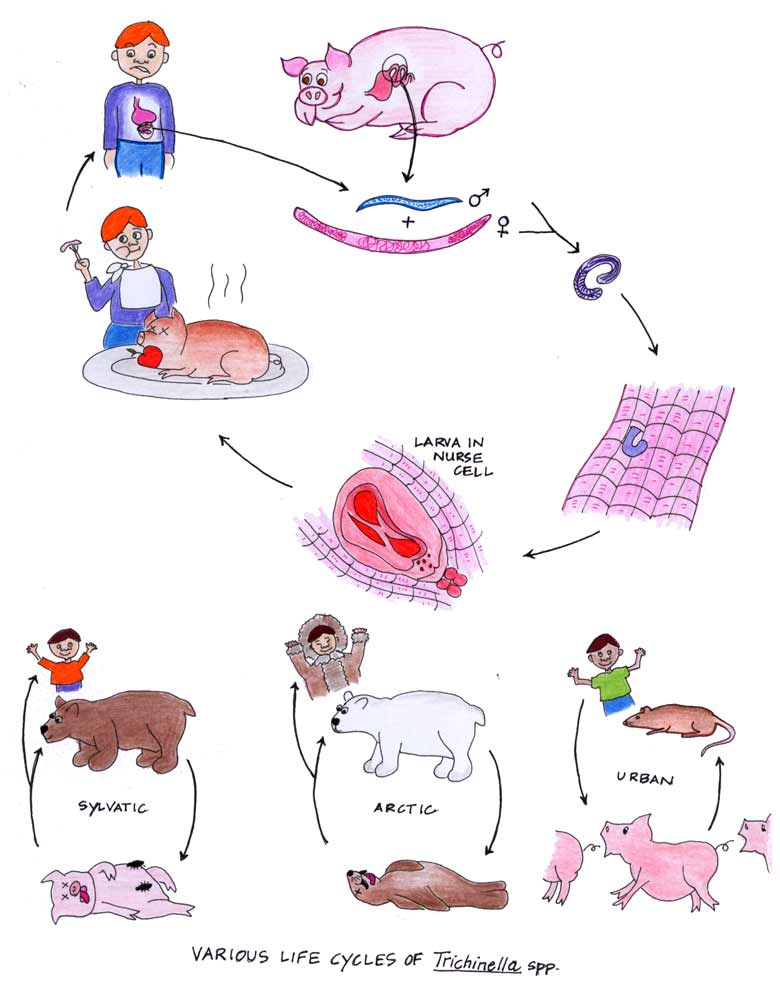
Trichinella spiralis is one of the most common nematode parasites of vertebrates. In humans, it is considered a zoonosis since humans represent a dead end in the life cycle unless anthropophagy (cannibalism) is involved. The larva is considered to be the largest intracellular parasite known, invading skeletal muscle of carnivores and molecularly programming the host cell to lose its contractile properties, instead becoming a nurse cell, functioning to nourish the larva. The entire life cycle occurs in a single host. Ingested larvae are digested free from the meat and in the small intestine, molt four times, grow and copulate, while migrating through the intestinal mucosa. Males die shortly thereafter and pass out with the feces. The impregnated females migrate through the intestinal wall and deliver live larvae (ovoviparity) which reach a blood vessel, pass into the hepatic portal system and migrate through the arterial tree, ultlimately reaching a skeletal muscle. Muscles of the eye, tongue, jaws, diaphragm, and rib cage are most heavily parasitized and limb and torso muscles to a lesser degree. Trichinella has undergone a taxonomic revolution recently with most authors now considering a number of species based largely on its distribution and sensitivity to temperature. T. nativa, characterized in the drawing above, is found in the arctic and subarctic and infects polar bears, walruses, and seals. The eating of raw meat is the cause of infection in eskimos. It has a high resistance to freezing. T. britovi and T. spiralis are found in the temperate zones and cycle between wild woodland animals including bears, foxes, wolves and feral pigs all of which may scavenge carcasses. Humans enter the cycle as hunters eating poorly-prepared kills. In tropical Africa, T. nelsoni is the variant with a low infectivity for rats and pigs instead relying on a variety of carnivores and carrion feeding mammals. Hyenas appear to play an important role. The domestic or urban cycle involves T. spiralis and includes pigs, rats and humans as the principle hosts. Pigs and rats become infected by eating raw garbage contaminated with uncooked pork scraps although larvae in rat feces may also serve as a source of infection. Pigs also kill and eat rats which venture into their stys. Pigs also exert territoriality in the sty by biting off and eating each other's tails. Humans become involved by eating raw or poorly cooked meat, principally pork as well as other meats. Raw or poorly-cooked sausage serves as a prime source of infection. In France, horsemeat has a high incidence of contamination with larvae, though the epidemiology of horse infections is unknown. The incidence of infection in the US has dropped considerably in the latter part of the 20th century, though it has risen slightly more recently as raw sausage-loving immigrants enter the country. T. pseudospiralis infects rats but pigs to much lesser degree. It may be a parasite of birds.